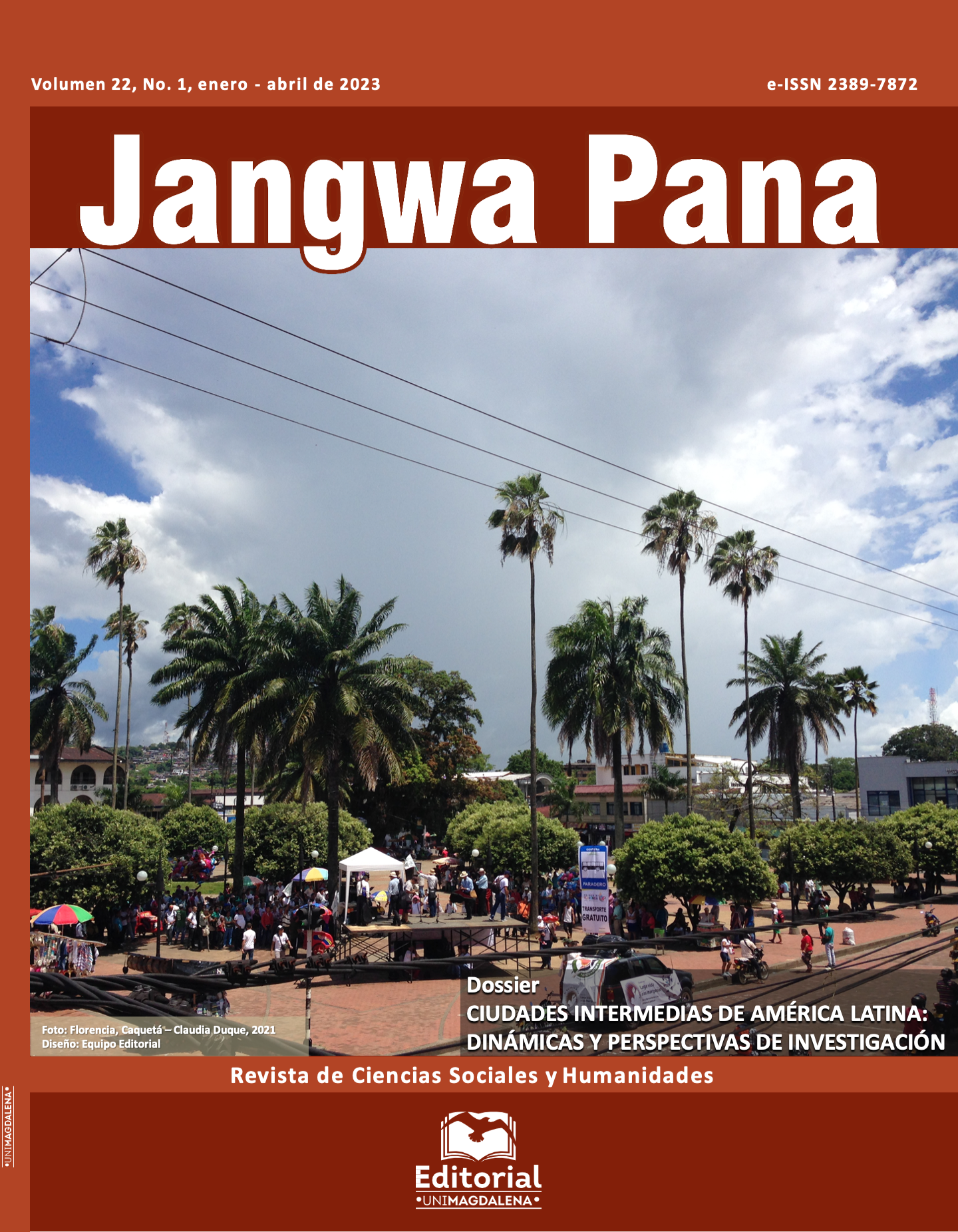Intermediate Cities: large-scale specialized containment spaces for human capital and reproductive work
Main Article Content
Abstract
Consequently, in this article it is proposed to think intermediate cities as territorialized space to contain the reproductive activity of human capital in order to ensure that intermediate cities function as private spaces on a large scale, so it is possible to posit that a) the function of this urban spatiality allows to understand that the reconfiguration of the global urban system is happening and proof of this is the creation of specialties and the blurring of other actors such as the Nation-State, b) this restructuring is constituted by a principle of specialization and spatialization and centralization of the various capitals, as well as migratory flows, labor flexibility and c) The importance of the workforce and its reorganization, it moves in a way not seen until now, we see mobility in smaller and more precise geographical sectors, from city to city.
The importance of reflecting on intermediate cities is sustained in its geopolitical role as it has a close relationship between dispossession by accumulation, sustaining the current economic model, the reorganization of migratory and habitat flows, problematizing the dilemma about "urban development" has arisen from historical processes of colonization, enclave economies, the destruction and domination of space to absorb it, refunctionalize it to generate a network of flows of economic, political, cultural, human and territorial capital.
Downloads
Article Details
References
Bolay, C., Rabinovich, A., Cabannes, Y. y Carrion, A. (2017). Monitoreo de ciudades intermedias PGU ALC / IREC-DA-EPFL. ONU-PGU América Latina. https://core.ac.uk/display/148033014?utm_source=pdf&utm_medium=banner&utm_campaign=pdf-decoration-v1
Brunet, I. y Santamaría, C. (2016). La economía feminista y la división sexual del trabajo. Culturales, 4(1), 61-86.
Carrión, F. (2013). Ciudades Intermedias: entre una pirámide trunca y una red urbana en construcción. En J. Canziani y A. Schejtman (eds.), Ciudades intermedias y desarrollo territorial (pp.21-31). Pontificia Universidad Católica del Perú.
Collin, F. (1994). Espacio doméstico, espacio público, vida privada. Seminario Permanente Ciudad y Mujer.
Federici, S. (2021). Brujas, caza de brujas y mujeres. Traficante de sueños.
Gago, V. (2019). La potencia feminista: o el deseo de cambiarlo todo. Tinta Limón.
Garazi, D. (2017). Las inestables fronteras entre el trabajo “productivo” y “reproductivo”. Reflexiones a partir del trabajo en el sector hotelero. Trabajo y Sociedad, 29, 431-446, https://www.unse.edu.ar/trabajoysociedad/29%20GARAZI%20Trabajo%20productivo_reproductivo.pdf
Harvey, D. (2005). El “nuevo” imperialismo: acumulación por desposesión. En L. Panitch y C. Leys (eds.), El nuevo desafío imperial (pp.99-129). CLACSO.
Jordan, R. y Simioni, D. (comps.). (1998). Ciudades intermedias de América Latina y el caribe: propuestas para la gestión urbana. Comisión Económica para América Latina y el Caribe (CEPAL). https://repositorio.cepal.org/bitstream/handle/11362/31024/S9800066_es.pdf?sequence=1&isAllowed=y.
Larrañaga, I., Arregui, B. y Arpal, J. (2004). El trabajo reproductivo o doméstico. Gaceta sanitaria,18 (4) sup. 1, 31-38, http://scielo.isciii.es/scielo.php?script=sci_arttext&pid=S0213-91112004000400007&lng=es&tlng=es
Lefebvre, H. (2013). La producción del espacio. Capitán Swing Libros.
Llop, J., Iglesias, B., Vargas, R. y Blanc, F. (2019). Las ciudades intermedias: concepto y dimensiones. Ciudades, 22, 23-43. https://doi.org/10.24197/ciudades.22.2019.23-43
Mignaqui, I. (2007). La ciudad global, las redes y la geografía urbana de los Estados glocalizados. FLACSO.
Prieto, M., Schroeder, R. y Formiga, N. (2011). Ciudades intermedias: dinámicas y perspectivas: el caso de Bahía Blanca Argentina. Revista Geográfica de América Central, 2, 1-17. https://www.redalyc.org/articulo.oa?id=451744820424
Salazar, G., Fonck, M. y Vergara, L. (2018). Ciudades intermedias: dinámicas de intermediación desde la noción de lugar. El caso de la región de la Araucanía, Chile. Revista de Geografía Norte Grande, 70, 109-130. https://doi.org/10.4067/S0718-34022018000200109
Sassen, S. (2001) The Global City: New York, London, Tokyo. Princeton University Press.
Sassen, S. (2007). El reposicionamiento de las ciudades y regiones urbanas en una economía global: ampliando las opciones de políticas y gobernanza. Eure, 33(100), 9-34. http://dx.doi.org/10.4067/S0250-71612007000300002
Smith, N. (2012). La nueva frontera Urbana. Ciudad revanchista y gentrificación. Traficante de sueños.
Smith, N. (2020). Desarrollo desigual. Naturaleza, capital y la producción del espacio. Traficante de sueños.
Thwaites R. M. y Ouviña, H. (2018). El ciclo de impugnación al neoliberalismo en América Latina: auge y fractura. En Ouviña Hernán; Thwaites Rey Mabel (Colección ensayo e investigación). Estados en disputa. Auge y fractura del ciclo de impugnación al neoliberalismo en América Latina. (pp.17-61). Buenos Aires, El colectivo.

